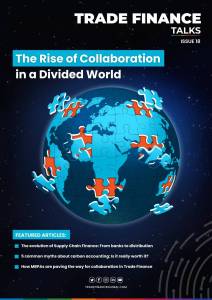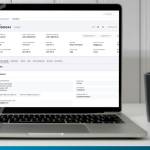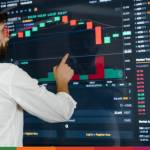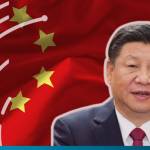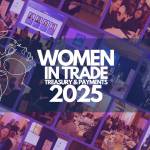Estimated reading time: 7 minutes
While a growing portion of the industry starts to seize the opportunities of measuring and managing emissions, many commodity traders still hesitate. Why undertake the complex process of carbon accounting, if it’s hard, if it’s not a legal requirement, and if it only draws attention to their high-carbon products rather than their competitors?
There are five common reasons for why some perceive carbon accounting as not worth the effort.
But if we address them one by one, it becomes clear that carbon accounting is crucial for future-proofing supply chains and unlocking rewards from customers and banks. Moreover, today’s technology can make the complex parts of measuring emissions surprisingly easy.
Myth 1: There’s no mandate, so let’s just wait
“We don’t have to report emissions, so let’s not waste time or money measuring them. Until regulators and legislators force us with incentives or penalties, carbon accounting is a bad investment.”
The reality: Carbon regulation is already here and spreading. Companies in a number of jurisdictions are (or will soon be) legally required to report their emissions, including Canada, Chile, New Zealand, Japan, the UK, Australia, US, Singapore, China, France and Switzerland.
On top of that, the new EU Corporate Sustainability Reporting Directive (CSRD) is set to quadruple the number of companies subject to mandatory carbon disclosure.
Some 60% of the world’s emissions come from global trade supply chains. So, commodity traders who haven’t yet felt the shocks of carbon pricing and reporting rules will soon be unable to escape them.
Ships are now subject to International Maritime Organization carbon reporting and rating rules, while the upcoming EU Carbon Border Adjustment Mechanism will force importers to report and pay a price on high-polluting imports. Biden recently announced that the US will require all major Federal suppliers to disclose greenhouse gas (GHG) emissions and set science-based targets.
There will be winners and losers. Companies that get their house in order now can ensure proper and smooth compliance when new regulations hit. Carbon accounting not only enables traders to measure the impact of carbon pricing schemes, but can help lower costs, by identifying and modelling how to reduce priced emissions.
The time to start is now. Over half of the world’s companies by market cap are already getting ahead and voluntarily measuring and reporting their emissions through CDP.
Myth 2: Too long to complete; too hard to get right
“Carbon data is in short supply. Sometimes, we can’t even trace all our suppliers and product origins. We’ve heard there’s huge room for error when following average-based methods, so what’s the point?”
The reality: Carbon accounting is indeed a challenge for unprepared businesses, especially for calculating supply chain or Scope 3 emissions, which are the most significant source of a typical business’s emissions and carbon risks — sometimes as much as 90%.
Suppliers often don’t measure or disclose their carbon information, and the scant information reported can be incomplete, unverified and hard to compare.
However, businesses don’t need to look far for the right tools. Carbon accounting can be completed accurately and on time using the GHG Protocol’s globally accepted methods for various carbon footprints, including supply chain emissions estimation when primary data is missing. They can also utilise CDP’s proven mechanism for requesting supplier disclosure.

Many commodity traders and producers are turning to specialist software and machine learning to fill asset-level carbon data gaps, all the way from source to shipment. For example, thyssenkrupp Materials Services Eastern Europe has adopted a digital carbon tracking solution to measure emissions across its metals supply chains and create standards for supplier transparency.
The process of getting carbon accounting right is an investment, but one to start as soon as possible and to keep improving. The new ISSB Sustainability Disclosure Standards provide companies with a grace period of one year to start reporting their Scope 3 emissions, acknowledging that these are the hardest to account for.
Myth 3: We focus on stakeholders, not nice-to-haves
“We need to focus on serving our customers, generating value for stakeholders, and accessing trade finance, not on optional add-ons. Especially not in a time of supply chain disruption”
The reality: Business expectations are changing. More and more customers are requesting the carbon intensity of their purchases, and are finding ways to source lower-carbon products in order to meet their own net-zero targets and regulatory requirements.
81% of financial institutions assess their portfolio’s exposure to climate-related risks, and 77% are requesting climate-related information from their clients.
Building trust in business has never been more important. It means being able to share the carbon footprint of the products you trade and sourcing lower-carbon options to support customers’ sustainability goals, like in the case of metals trader Concord Resources Limited and leading aluminium rolling mill Niche Fusina Rolled Products (Fusina).
When it comes to trade finance, building strong partnerships with banks involves responding to, or preempting, requests for carbon reporting. This can unlock immediate benefits like interest rate discounts and sustainability-linked loans (SLLs).
For example, Societe Generale has signed major deals with two leading metals commodity merchants, to pilot access to SLLs tied to emissions-reduction KPIs.
Myth 4: There’s no single standard: it’s an alphabet soup!
“The prevailing standards aren’t decided yet. We don’t have time to navigate the myriad of reporting standards with all their acronyms. If they’re not uniform, then we’ll be duplicating work, and customers won’t be able to easily compare our data with competitors”
The reality: Until recently, the existence of multiple carbon reporting standards and frameworks has been blamed for some industry inertia.
However, there has long been one main go-to global standard for carbon accounting (the GHG Protocol) which is the key reporting frameworks (TCFD, CDP, SASB, GRI) align with, even if companies vary in which frameworks they follow and how comprehensively they report.
The reality is that a future update to a reporting standard isn’t going to materially change what is required when it comes to reporting. All the data collection, verification, baseline setting and target setting will all be very similar, so don’t use that as an excuse to get started.
Efforts now to move early will not be in vain.
That’s why the recent publication of the ISSB standards, which aim to unify all others, is a big step towards a global baseline for sustainability- and climate-related financial disclosure
Myth 5: We already know our high-carbon goods
“We know oil contributes more to global warming than aluminium, but we’re not responsible for what happens after we sell it, or for our customers’ choices. Diving deeper into the exact emissions will just expose us to reputational risk, and most of our portfolio is metals anyway.”
The reality: Unless they quantify their trade emissions from end to end, commodity traders (and their financiers) don’t truly know their high-carbon goods.
There can be huge variations in so-called ‘high’ carbon product emissions; a tonne of aluminium can be between 3-20 tonnes of carbon dioxide equivalent per tonne of aluminium in carbon intensity. Or one copper refinery might emit less than another, but it might source from a significantly more carbon-intensive mine.
Some traders fear that opting for the most robust methodology out of the recommended options will only make a competitor’s product look unfairly lower-carbon if that competitor takes a weaker approach.
However, reputational concerns about carbon disclosure pale in significance next to the danger of failing to identify carbon-related risks ahead of time. Environmental risks could cost supply chains $120 billion by 2026, and sharing your product or corporate carbon footprint, even if it is high, is better than it being exposed.
The carbon footprinting process allows traders to find ways to lower emissions and manage the impacts of carbon pricing (for example by screening suppliers and rating assets against industry benchmarks like the IMO Carbon Intensity Indicator and the Poseidon Principles).
It’s also the most fundamental tool for avoiding the kind of greenwashing that’s caused by making low-carbon claims without verifiable data.
Counting carbon puts you in control
To tweak an old proverb, the best time to start measuring emissions was 20 years ago. The second best time is now, as regulation tightens and more opportunities in trade finance and product differentiation emerge.
Today, tools are available that make it possible to accurately and painlessly account for and report trade emissions, while pinpointing carbon risks.
Put it this way: for every business that delays, another competitor is ready to seize the emerging financial incentives and meet customer demand for low-carbon products.
















